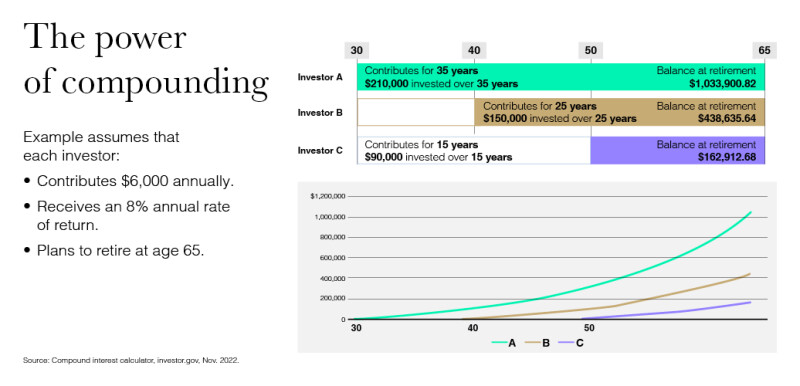Doing your tax return may not be a thrilling experience, but the prospect of getting money back can be motivating. Not sure what to do with tax refunds or how to make the most of a windfall? If you overpaid on your taxes and expect to get some of it back, you might be dreaming about a fancy new gadget or a relaxing getaway in the sun. Those purchases offer a nice short-term boost, but there are other ways of using that money with a more lasting benefit.
Here are seven options to consider before spending your tax refund.
1. Pay off your debt
If you are saddled with loan or credit card balances, any influx of money is a perfect opportunity to lighten your load. According to a
Two debt management approaches to consider:
- Snowball method. This approach involves finding your smallest sources of debt and paying down the balance as quickly as possible while making minimum payments on larger debt sources. This gives you a quick win and helps you gain momentum. You then can start putting all extra payments toward the next-smallest debt, creating a snowball effect.
- Avalanche method. This method involves paying down the debt with the highest interest rate first while making minimum payments on debts carrying lower rates. Over time, you will find that you aren't paying quite so much in interest costs, and you can start working on the debt with the next highest interest rate.

Free money coaching
2. Build your emergency savings
Life is unpredictable—you simply don't know when a job loss or major illness will arise, potentially creating a financial crisis. That's why you should have an
Consider placing that money somewhere you're able to access quickly and where your deposits aren't at risk of losing value. Federally insured, high-yield bank accounts fit both criteria. Online accounts often pay a higher interest rate than brick-and-mortar banks, enabling your money to potentially grow more over time.
> Dive deeper:
3. Boost your retirement savings
Dropping a tax refund into a retirement plan can be one of the best ways to maximize dollars, particularly for younger investors. That's due to the power of

Most 401(k) and similar employer-sponsored retirement plans don't accept lump-sum investments, but you could increase your payroll contributions and use the refund money to supplement your reduced take-home pay.
Employer sponsored retirement plan limits: 401(k), 403(b) & 457(b)
Annual limits for retirement plans are set annually by the IRS. If you are 50 or older, you also have the opportunity to make
401(k), 403(b) & 457(b) contribution limits:
- 2023 contribution limit: $22,500
- 2024 contribution limit: $23,000
- Catch-up limit for age 50 and older: $7,500
Want to make a lump sum contribution for retirement? Consider an IRA.
- 2023 contribution limit: $6,500
- 2024 contribution limit: $7,000
- Catch-up limit for age 50 and older: $1,000

Are your retirement savings on track?
4. Invest in your short-term needs
You may have savings goals outside of those of your future retirement. An alternative to think about is investing in a
You won't get the tax deferrals of a
5. Start a college fund for your kids
The average cost of college in the U.S. is
For parents with minor children, tax refunds present a great opportunity to build a
6. Donate to charity
There's nothing as satisfying as lending support to those who need it most. Consider making a difference by giving at least part of your refund to a charitable organization that reflects your values. You may find it's easier to donate using a chunk of unexpected money you hadn't factored into your budget.
7. Do something fun
Financial planning is all about balancing your near-term well-being with your long-term needs. That is to say: You still can use some of your tax overage on something fun, like a new kitchen appliance or a getaway with friends, but prudence is key.
If your emergency fund needs a boost or you're not on track with your retirement contributions, you may want to set aside the majority of your refund for those higher-priority goals, but that doesn't mean you can't treat yourself. Before the refund arrives, think about the percentage that you're comfortable using today—perhaps 10% or 20%—and put the rest toward longer-range needs.
Still deciding what to do with tax refunds?
Still not sure about the best way to use your tax refund? Based on your unique circumstances and long-term goals, our financial advisors can recommend options that fit into your broader wealth management plan.







